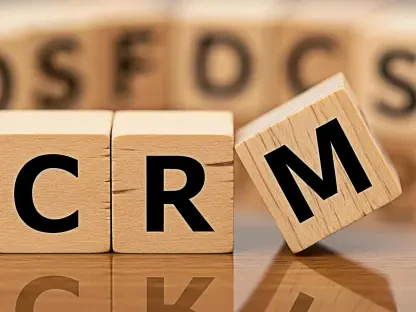In an era where digital marketing is evolving at a rapid pace due to advancements in technology and changes in consumer behavior, it’s essential to have a robust strategy to stay ahead of the curve. Navigating through Google’s frequent updates, the rise of AI, and changing privacy laws can be overwhelming, making it crucial to maintain a clear and effective plan. Corey Morris, in his book “The Digital Marketing Success Plan,” introduces a framework known as START to help businesses stay focused and adaptable. The START framework is a five-step process that guides the development of a digital marketing plan. We’ll explore each step in detail to help you understand how to formulate a strategy, determine methods, execute implementation, conduct assessments, and plan adaptations for a successful digital marketing campaign.
Formulate Strategy
The first phase of START planning is all about formulating a solid strategy. This involves understanding the current state of the business and setting realistic goals that can be achieved through digital marketing efforts. During this phase, it’s crucial to map marketing metrics to business outcomes and review all past marketing efforts and expectations. Formulating a strategy isn’t just about looking forward; it’s also about understanding what has worked and what hasn’t in the past.In building this comprehensive strategy, one must engage in exhaustive research, collecting data through business intelligence and financial systems backed by CRM platforms or other relevant tools. For some companies, digital marketing channels have organically been added over the years without a coherent strategy, making it important to connect the dots for accurate attribution and ROI measurement. Ensuring that all levels of the business, teams, and stakeholders are aligned on the end goals of digital marketing will pave the way for a more focused approach moving forward. Once clear objectives are set, it becomes easier to explore various tactics to achieve these defined goals effectively.
Determine Methods
Once you have a firm strategy in place, the next phase involves determining the methods you will employ to achieve your goals. This involves exploring all potential channels and networks, such as SEO, Google Ads, and LinkedIn sponsored content, to find the best avenues to reach your target audience. Utilizing leading research tools and estimation platforms can help uncover new opportunities and evaluate the viability of different methods.This phase requires a critical examination of your biases towards certain channels. Your previous experiences and expertise might lead you to favor certain methods, but it’s important to remain open-minded. For instance, LinkedIn might yield better results than Google Ads in some scenarios, or programmatic display ads might play a hidden but crucial role in the customer journey that you hadn’t considered. Ensuring that your tactics align closely with the overall strategy and goals will help in executing a cohesive and effective marketing plan. Avoid letting tactics become the be-all and end-all; instead, let them serve as the actions that drive your strategy forward.
Execute Implementation
The third step in the START framework is to execute implementation. This phase involves mapping out all the assets, both large and small, that you will need to bring your strategy to life. Creating an inventory list of all required tactics is essential, which includes ads, graphics, web pages, copy, and other necessary assets for a successful campaign.At this stage, it is tempting to dive right into the creation of new ads or landing pages. However, it is crucial to stick with identifying what you need first and connect it back to the “why” established in the strategy and tactics phases. This approach ensures that resources are spent wisely and actions align with the overall plan. Time and money are key factors, and without proper identification, you risk executing expensive tasks that may not yield the desired results or could even delay the launch of your plan indefinitely. Prioritizing well-defined identification will prevent stalling and help in the efficient allocation of resources.
Conduct Assessment
The fourth phase, conducting an assessment, is all about defining the aspects needed to manage and measure the success of your digital marketing plan. This involves setting up performance measurement dashboards and systems that are tied to the ultimate ROI equation. It’s important to measure channel performance, roll-up performance, and resource effectiveness to provide accountability for the plan.In this phase, you’ll also establish project management systems or align resource planning platforms to manage the work efficiently. Setting up benchmarks, budgets, reports, and roles is essential to keep track of every aspect of the plan. Many systems exist for these purposes, some customized and some out-of-the-box, but they often miss tracking the full picture of digital marketing ROI. Ensuring that your systems account for all internal costs, external contractors, agencies, software, and advertising spend will provide a comprehensive understanding of your digital marketing efforts. Gaps in tracking can lead to discrepancies in ROI calculations, which can result in challenging discussions with stakeholders or investors.
Plan Adaptation
The final phase of the START framework involves planning adaptation. This is about scheduling your tactics so they remain aligned with the overall strategy while being flexible enough to adapt to changes. Crafting a comprehensive calendar of tactics, optimization processes, agile strategies, and reporting cycles will help maintain the plan’s efficacy.It’s essential to map out milestones, content pushes, experiments, and tasks to keep everything on track. Even if you’ve had success in various digital marketing facets like SEO, Google Ads, social media, and email marketing, these results usually come from focused efforts rather than sporadic, disjointed actions. Ensuring that resources are planned and tactics are scheduled can provide better control over the execution of the plan. Unforeseen events, such as new product launches, shifts in audience focus, or changes in competitor strategies, can disrupt your plan. Therefore, having a documented strategy that allows for agility and flexibility ensures that it remains relevant and effective over time.
START Your Way to Digital Marketing Success
Once you’ve established a solid strategy, the next step is to decide on the methods to achieve your objectives. This means exploring various channels such as SEO, Google Ads, and LinkedIn sponsored content to determine the best ways to reach your target audience. Employing top research tools and estimation platforms can reveal new opportunities and help assess the viability of different methods.This stage requires you to critically assess your biases toward certain channels. Your prior experience and expertise might make you lean towards specific methods, but it’s vital to keep an open mind. For example, LinkedIn might outperform Google Ads in some cases, or programmatic display ads might have an unforeseen but significant role in the customer journey. Ensuring that your tactics align closely with your overall strategy and goals will enable the execution of a cohesive and effective marketing plan. Tactics should not be seen as ends in themselves; rather, they are actions that propel your strategy forward. This approach will help maintain focus and effectiveness in your marketing efforts.









